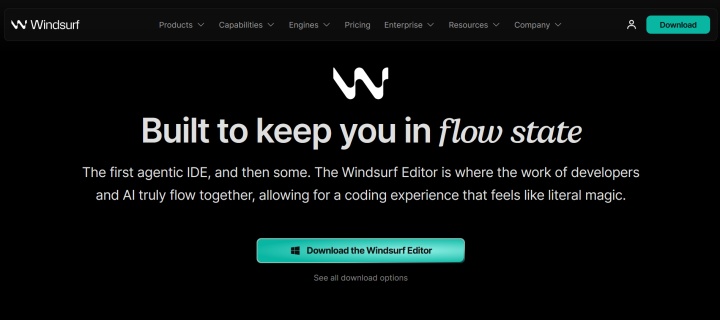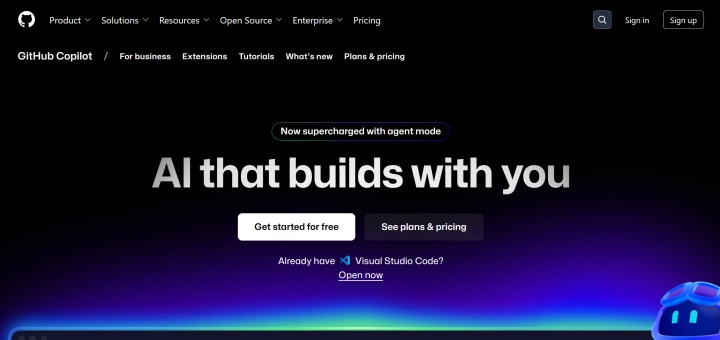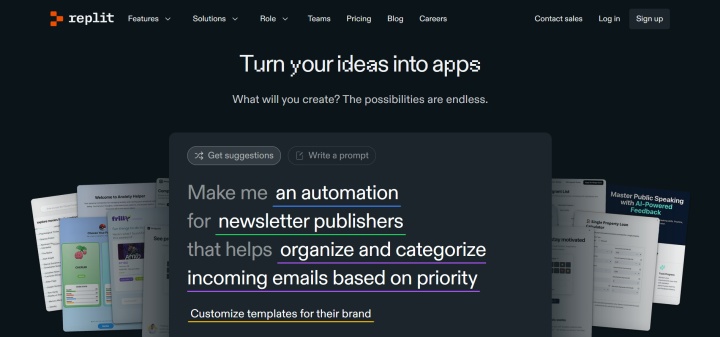From Prompts to Production: How Vibe Coding Is Redefining Software Development
With the advent of virtual assistants based on neural networks, programming has become less of a complex routine process requiring high concentration. Today, developers can significantly reduce the time spent on writing and debugging code – these tasks are increasingly taken over by artificial intelligence. Such conditions have become the impetus for the emergence of a new approach to creating programs – vibe coding. In this article, we will tell you what vibe coding is, how this concept transforms the development process, and what its key advantages and limitations are. You will also learn what tools help to implement this approach in practice.
Understanding Vibe Coding
Recently, a new concept in the programming field has attracted more and more attention – vibe coding. For those who are just getting acquainted with this approach, it is important to clarify the meaning of vibe coding. This is the name for AI-assisted programming, in which interaction with code occurs through text and voice prompts.
The concept is based on using prompts for coding. Its popularization became possible due to the development of large language models (LLMs), such as GPT and Codex from OpenAI, Gemini from Google, Claude from Anthropic, and many others. These systems are capable of performing a full cycle of programming tasks: from generating and editing code to analyzing and debugging it.


The term was coined by OpenAI co-founder Andrej Karpathy, who first mentioned it in a February 2025 post on X (formerly Twitter). He describes vibe coding as an intuitive and accessible way of development for a wide audience, in which AI takes over most of the technical work. All you need to do is control the AI assistant through text and voice prompts, as well as perform basic copy-paste functions.
There are quite a few tools that support vibe coding today – from universal AI assistants (ChatGPT, Claude, Gemini) to specialized editors with built-in AI (for example, Windsurf and Cursor). We will talk about the most popular solutions a little later.
Although prompt-based coding is a relatively new phenomenon, it has already begun to have a noticeable impact on the development industry. This approach represents a shift from traditional, labor-intensive programming to more flexible and intuitive methods. Instead of writing code manually, interaction with AI via prompts comes to the forefront – fast, adaptive, and accessible. This format of work simplifies the daily tasks of a developer and better aligns with the principles of rapid prototyping and iterative development.
Inside the Workflow
Having familiarized yourself with the vibe coding definition, you can move on to the next stage – studying the practical implementation of this approach. Its implementation in the work process involves several key steps:
- Selecting a tool. Firstly, specialists need to decide on an AI-enabled code editor that they will use. When choosing a platform, you should focus on its functionality, interface, convenience, and cost. In addition, it is worth paying attention to the possibility of integration with external programs.
- Setting tasks and requirements. The next step is to write the most precise and understandable prompt for the virtual assistant. The developer must describe the task and all related requirements in detail, considering the context. The more relevant the formulated request, the better the quality of the AI-generated result will be.
- Code analysis and refinement. After receiving the code from the AI assistant, the specialist studies it and takes steps to improve it. Modern neural networks often make mistakes, so the code they generate most often needs to be refined. After checking, the developer makes a list of the errors found and sends the neural network a refined request.
- Code review and delivery. During the final stage of AI-assisted programming, the specialist re-checks the modified code and makes minor manual edits if necessary. After all debugging activities are completed, the code is delivered for final deployment.
Each step plays an important role in ensuring the efficiency and quality of the final result. The success of the entire process depends on the sequence and accuracy of execution.
Benefits vs. Drawbacks
The modern approach to programming with the participation of AI changes the usual principles of development, offering an intuitive and flexible format for working on code. However, like any innovative method, vibe coding has not only strengths but also very specific risks. To understand how appropriate it is to use this format in work processes, it is worth considering its key advantages and disadvantages.
Advantages:
- Process optimization. Vibe coding helps to create and bring to market a minimum viable product (MVP) faster, significantly optimizing its development processes. As a result, the business gains more freedom to work out experimental ideas, reduces risks, and minimizes development costs.
- Rapid prototyping. One of the main benefits of AI-assisted programming is its ability to rapidly prototype products. It allows teams to spend much less time and resources turning ideas and concepts into functional prototypes.
- Problem-first approach. Vibe coding transforms the basic approach to software development. Strict classical programming with manual writing and debugging of code becomes flexible and integrated. Using the necessary AI tools, the developer concentrates as much as possible on solving the problem, rather than on the technology stack.
- Multimodality. Prompt coding has led to the spread of multimodal programming, which combines elements of text, visual, and voice control. Many specialized AI platforms have voice command functions, visual interfaces, and hybrid development environments. This increases the flexibility of processes, making the work of a software developer more comfortable and productive.
Potential risks:
- Code performance and quality. AI assistants help to release prototypes faster to test ideas. However, the quality of their code is often not suitable for the final version of the product. Vibe coding is not the best solution for distributed applications that require structured architecture and complex optimization strategies.
- Security issues. Vibe coding AI can introduce significant vulnerabilities that can lead to critical program failures and leaks of confidential data. AI programming is often performed without code analysis and security testing, which is why many potential threats remain undetected.
- Support and updates. Applications that use AI-generated code often have difficulties with maintenance and updates. This is especially true if developers do not make timely changes to the database. Without understanding the logic of the code created by neural networks, specialists cannot optimize and update it efficiently.
- Non-standard technologies and debugging challenges. Artificial intelligence works effectively with standard frameworks. When using new or non-standard solutions, the quality of its results is often lacking. Debugging code created by AI assistants is often difficult due to its dynamism and insufficiently structured architecture.
Tools and Use Cases
At the current stage of vibe coding development, tech professionals can choose specialized tools that integrate LLM capabilities into familiar environments. These platforms are designed not only to accelerate the process of writing code, but also to change the very logic of interaction with it – from generation and editing to analysis and deployment. To understand how such solutions work, we recommend that you familiarize yourself with the key vibe coding tools and examples of their practical application.
Cursor
Cursor was developed on the VSCode platform and released in 2023. The service is a full-fledged development environment with integrated AI models. At the time of writing, it supports more than 10 LLMs, including Claude 4 Sonnet, Gemini 2.5 Pro, and GPT-4o. The platform contains a number of built-in tools for automating code writing and editing, as well as other workflows.

The editor is available as a standalone app for Windows, macOS, and Linux on a freemium model. It offers a free basic subscription and paid plans with advanced features and priority support.
Use case: A small startup team is working on creating an MVP of a web application with limited time and budget. Cursor vibe coding helps automate routine tasks of code generation, suggesting architectural solutions and editing, allowing developers to focus on the key logic of the product. Support for several LLMs gives the team the ability to flexibly switch between models and choose the most suitable for specific tasks – from fast generation to deep optimization.
Windsurf
Windsurf is a popular code editor in the form of a plugin for VSCode, with built-in language models GPT, Claude, Gemini, Grok, and others. The main AI tool of the service is the virtual assistant Cascade. It not only writes, supplements, and changes the code, considering the context, but also gives personalized recommendations for improving its quality.

Developers can download Windsurf AI as an extension for popular IDEs. Users are offered a range of pricing plans, from free with basic features to paid plans with advanced capabilities for individuals and teams.
Use case: A freelance programmer develops a custom solution for a client using a non-standard stack. The built-in Cascade assistant offers personalized code improvements and provides advice on its quality in real time, considering the context of the project. Windsurf vibe coding enables flexible adaptation to task complexity and accelerates the final review process before project delivery.
GitHub Copilot
GitHub Copilot is one of the widely known vibe coding platforms. It was released by Microsoft in 2021. The system is integrated into VS Code, which gives it full access to the VS Code API and the Microsoft product ecosystem. It has a number of native tools for complementing and generating code, as well as answering questions about the codebase via online chat. In addition, the platform has a large library of extensions. Compared to Windsurf and Cursor, Copilot has a smaller set of AI models, but it includes the most popular ones (Claude Sonnet, Google Gemini, GPT-4o, o1, and GPT-4o-mini).

GitHub Copilot offers a paid subscription with a free trial. For individual users, the price is around $10 per month or $100 per year. Special plans are available for organizations and educational institutions.
Use case: A large development team is building a large-scale enterprise application with many modules and a complex architecture. GitHub Copilot helps automate writing typical code fragments, quickly generates tests, and provides API hints. This significantly accelerates the development process. Thanks to tight integration with the Microsoft ecosystem and popular models, Copilot makes it easier to support and scale the project in the long term.
Replit
The Replit code editor is a popular solution for vibe coding. Its main tool, Replit Agent, takes care of all stages of software development with the help of built-in LLMs. According to the creators of the project, it can effectively automate the process of creating different types of applications: programs for business, games, online stores, marketing services, blogs, and more. In addition, the editor has a number of tools for collaboration and deployment of finished products.

Replit offers separate pricing plans for individual developers and teams. Its lineup includes a free Starter plan with basic features and paid plans with advanced features and priority support.
Use case: An educational platform uses Replit for interactive programming courses where students can write, run, and debug code right in the browser. The built-in Replit Agent automates solution checking and helps beginners with minimal experience create full-fledged applications. The presence of collaborative workspaces facilitates interaction between teachers and students, accelerating learning and increasing engagement.
Final Thoughts
Knowing what vibe coding means is a must for every developer who wants to stay competitive in the market. Mastering this approach allows you to significantly accelerate the process of creating and testing products, focusing on solving key problems rather than routine code writing. It helps bring ideas to life faster, reduce costs, and effectively adapt to new requirements. By implementing vibe coding, developers gain a powerful tool that helps them stay one step ahead in the rapidly changing world of technology.
The integration of traditional code editors with the latest versions of AI models significantly simplifies and optimizes the process of software development. It becomes more flexible, dynamic, and less resource-intensive. Virtual assistants with built-in neural networks make writing code much more accessible for novice developers and non-tech specialists.
Time is the most valuable resource for business today. Almost half of it is wasted on routine tasks. Your employees are constantly forced to perform monotonous tasks that are difficult to classify as important and specialized. You can leave everything as it is by hiring additional employees, or you can automate most of the business processes using the ApiX-Drive online connector to get rid of unnecessary time and money expenses once and for all. The choice is yours!

